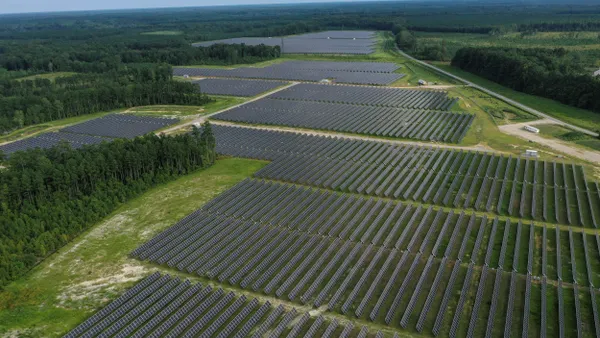Dive Brief:
- Community solar could supply 1.7%-2.6% of all electricity consumed by the U.S. in 2030 if all states were to establish policy-enabled community solar markets, according to a report by GTM Research.
- The report points to a large gap in solar accessibility, noting between half to three-fourths of Americans cannot access traditional rooftop solar. Community solar is a potential way to grant access to 50 million U.S. households that are classified as low-to-moderate income (LMI) residences.
- One of the largest obstacles preventing community solar's growth is state policy, according to GTM Research. While 42 states plus Washington, D.C. have a community solar program in place, only 19 have policy-enabled solar markets, which include virtual net metering and community renewables programs.
Dive Insight:
Community solar has become a vital and growing way to give access to renewables to a broader customer base; its cost predictability and economic savings are some of its most compelling selling points to customers, the report said. But advocates argue the amount of capital needed for the initial investment is still too high for many LMI residences.
While U.S. rooftop solar prices have dropped 40% in the last five years, the solar market remains largely inaccessible to LMI households, which make up 43% of all U.S. households.
Utility-led partnerships seem to be the prerogative for community solar growth so far. As of May, at least 228 utilities had community solar offerings, but advocates hope more widespread state policy measures will lower some of the costs and integrate community solar more fully into the market.
This report comes in the midst of many utilities' arguments that residential solar should not be incentivized. Some states are winding down net metering programs, including Indiana and Arizona, moving state policy further from what community solar activists would consider ideal for growth.














